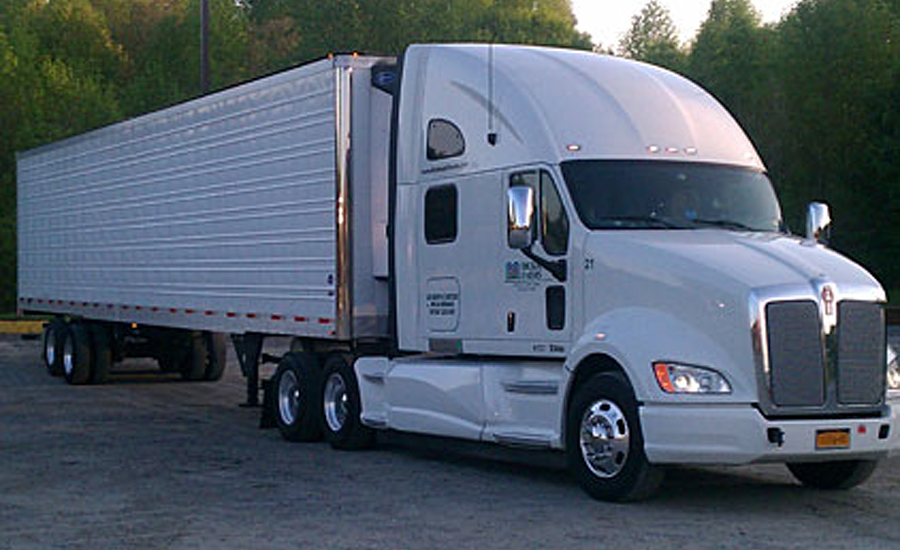The expansiveness of today’s cold food supply chain makes the industry particularly sensitive to vulnerabilities. It is not unusual for processors to import ingredients from around the world and then export finished goods to many different countries, all the while maintaining product purity.
In today’s cold food supply chain, vulnerabilities come in many forms. Some will be more visible and easier to manage while others will be virtually invisible and extremely difficult to control. As one considers the role of a supply chain executive leading an organization that uses spices grown in India, vegetables grown in Mexico or seafood from China, how much detail can the company learn about these products and the suppliers from which they are procured? Despite on-site visits, laboratory analysis and audits, available information is never enough. Unexpected problems still pop up. And, sometimes unidentified additives or ingredients fail to meet FDA standards.
Transportation, be it international or domestic, is also a continuing vulnerability when it comes to cold foods. Temperature instructions are included on the bill of lading, and receivers routinely verify temperatures of incoming product, but that only provides a snapshot of one point in time. Unless temperature is continuously recorded along the entire transportation journey, the receiver has no way of knowing about any potential temperature abuse.
Here is a real world example. I was visiting a truck refrigeration unit repair facility late one Friday. The operation agreed to work late to assist a long-haul trucker with a full load who was experiencing problems with his refrigeration unit. When he arrived, we found that he was hauling a full truckload of refrigerated meat and his reefer unit conked out hours before subjecting the load to undesirable heat. After the refrigeration unit was repaired, the driver set the temperature to low and cooled the entire load over the weekend, so that when he arrived at his destination on Monday, the receiving temperatures would be acceptable.
Similarly, there are potential temperature vulnerabilities in every refrigerated warehouse, especially if the receiving dock is not cooled. Since it is standard practice to stage incoming loads in the receiving area for later transfer to storage, temperature abuse happens easily if the put-away process is delayed for hours. In fact, it becomes more acute if the receiving area is ambient temperature, thus exposing the product to excessively high temperatures.
Because cold foods all have limited shelf life—much lower for refrigerated vs. frozen—it’s imperative to accurately track freshness of date codes. And, all capable refrigerated warehouses have this ability embedded in their warehouse management software. When the same product comes to the warehouse from different origins with large multi-plant processors, tracking by production code is the only thing that makes sense; tracking by receiving date offers no value. Vulnerability comes into play when receivers have to record an accurate production date code. While plants are usually very good at applying the correct production date to shipping cases, there are times when a code is not easy to read. That’s why the receiver makes his/her best attempt at accuracy and handwrites the conclusion. Later, this hand-written entry is typed into a computer by another person. Any error in reading, recording or data entry can lead to stock rotation issues. While this is not a common problem, it can be a major headache and lead to unnecessary product destruction.
Above and beyond the freshness and quality issues inherent in cold foods, the overriding concern about supply chain security weighs on many responsible executives. Certainly in this day and age of computer hackers and heightened security to combat terrorists, one must think about the integrity of our foods. Any act of deliberate sabotage in a production facility, on a transport vehicle or in a distribution center can have far-reaching consequences. While packaged foods have some protection after they leave the production facility, raw products such as produce, meat and seafood can easily be accessed inside a shipping case by anyone intent on causing harm. Unfortunately, there is no easy fix for this major vulnerability. It means vetting all employees and business partners prior to any engagement. It means constant vigilance and attention to all guidelines and regulations. The supply chain is only as secure as the processes in place and the people that monitor compliance.
While vulnerabilities in the cold food supply chain are probably as high as they ever were, there are better systems and tools to aid the effort in mitigating them. Well-trained employees with proper intentions supported by good technology can go a long way to keeping vulnerabilities in check for the entire supply chain.










